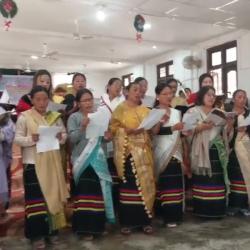Increase in the number of the internally displaced persons or IDPs (conflict induced) is primarily because of changing nature of warfare over the years. Besides sharp rise in internal conflicts due to ethnicity, religion, communalism, race, caste, separatists’ movements and various other reasons have added to this woe.
Cut off from their land, livelihood, income, and compelled to leave all but a few possessions behind, IDPs suddenly find themselves stripped of their means of survival.
The displaced are often stigmatised and also viewed with suspicion and hostility in the areas where they take shelter. They are vulnerable to acts of violence and human rights violations, including round-ups, forced conscription and sexual assault. The IDP category is taken for granted, and its unintended consequences are not often addressed.
Whereas shelter and food are basic components of assistance to refugees, in the case of IDPs, there is no UN agency that meets this need in humanitarian crises.
Many IDPs, moreover, are not found in camps but seek out shelter where they can, example - abandoned buildings, urban slums, roadside areas etc. With limited, if any, access to land and also cut off from their normal means of income, IDPs tend to be more dependent on food assistance than others in the local population.
In Assam, displacement is mainly due to demographic changes leading to intense conflict and violence for protection and preservation of its community. But what is the root cause of conflict ? Competition for natural and economic resources and struggle for political power among locals, others and migrants.
A small example of how anger among communities lead to violence. The story of displaced Santhals in western Assam shows how the discriminatory and uncaring attitude of the government has lead to birth of militant outfits.
Denied by government of protection, the Adivasi Cobra Militant Force and Birsa Commando Force were formed by some Santhals. Their violence and administration's operation against them have led to further terror.
Few years ago, the state government offered Santhal IDPs Rs. 10,000 as housing grant and were "released" from the camps. Release meant rations were stopped and they must fend themselves. They were afraid to return to their villages where their land and property were taken over by the Bodo community.
In India, the human rights commissions are limited of providing recommendations as they lack punitive power. The Centre has no national policy to respond to conflict-induced displacement. The responsibility for protecting this population has generally been entrusted to state governments.
It is difficult to deny that IDPs have certain needs that are distinct from the general population and which require special attention. What distinguishes the internally displaced are the unique needs and heightened vulnerabilities that arise as a result of forced displacement, including their need for a durable solution.
The vulnerabilities engendered by displacement do not necessarily diminish over time. Unless the situation of the IDPs is addressed to the core there will be no lasting peace. The proper rehabilitation of conflict induced displaced people must form the centre of peace building programmes in these areas.
- 16537 reads










Add new comment